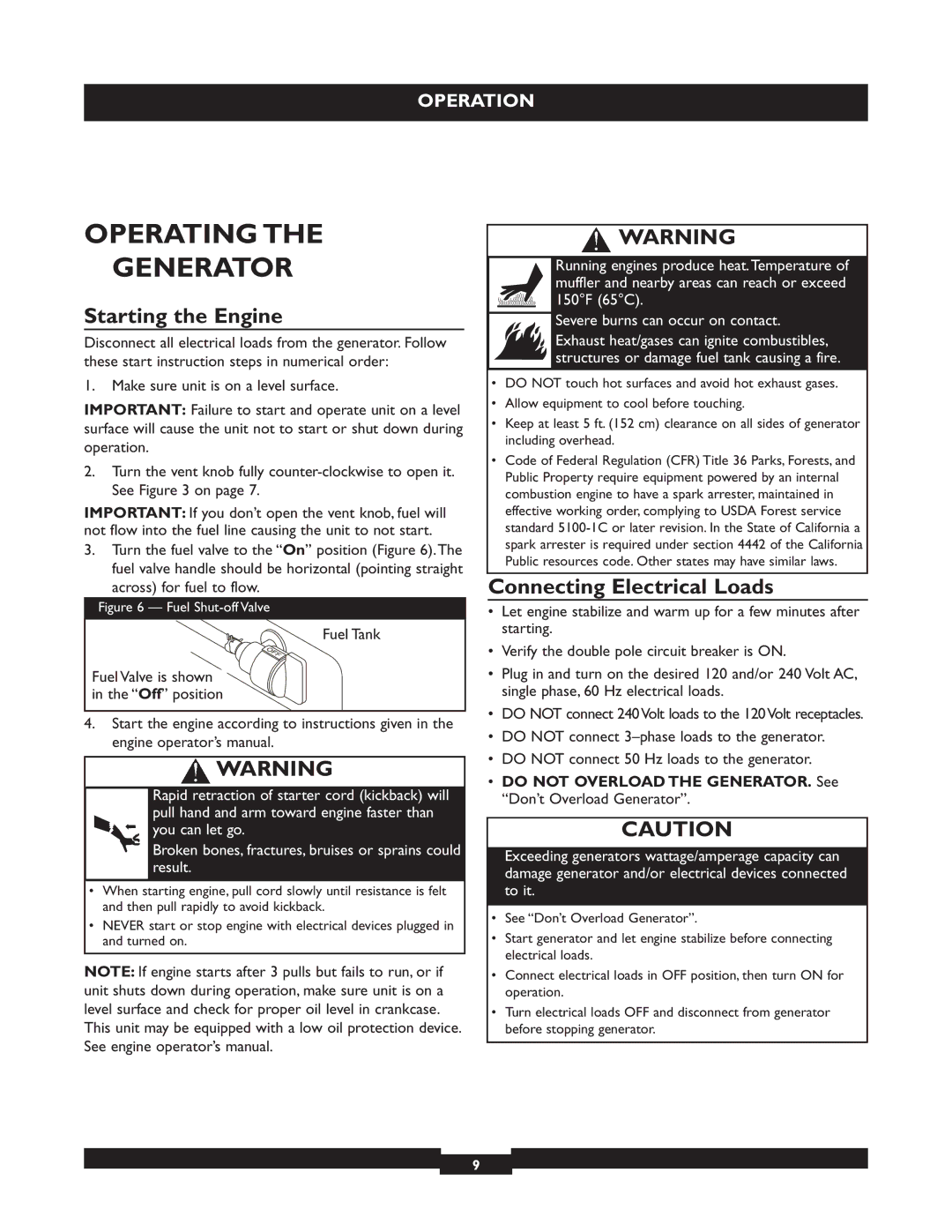01655-3 specifications
The Briggs & Stratton 01655-3 is an advanced portable generator renowned for its reliability and high-performance output. With its robust engineering, this generator is designed to meet the power needs of both residential and commercial applications, making it a versatile choice for users seeking a dependable source of electricity.One of the main features of the Briggs & Stratton 01655-3 is its impressive power output. It typically offers a starting wattage of around 7,500 and a running wattage of about 6,000, which enables it to handle multiple appliances simultaneously, from refrigerators and air conditioners to power tools and lighting. This capability is particularly beneficial during power outages or when users require additional power for outdoor events.
The generator is powered by a reliable Briggs & Stratton engine, which is known for its durability and longevity. The engine is equipped with advanced technologies such as a low-oil shutdown feature, which automatically turns off the engine when oil levels are too low, preventing potential engine damage. Additionally, the generator is engineered for fuel efficiency, allowing users to run it for extended periods without frequent refueling.
Another standout characteristic of the Briggs & Stratton 01655-3 is its portability. The generator comes with sturdy wheels and a comfortable handle, making it easy to transport from one location to another. This feature is particularly useful for contractors or homeowners who require temporary power solutions in different areas.
The generator is also designed with user-friendly controls, featuring a power panel that provides clear access to multiple outlets, including standard 120V household outlets and a 120/240V twist-lock outlet for heavier equipment. This versatility allows users to connect various devices and tools with ease.
Safety is another priority with the Briggs & Stratton 01655-3. The generator is designed with robust protective features, including circuit breakers, which help prevent overloads and ensure the safety of connected devices. Additionally, it operates quietly, reducing noise pollution in residential settings.
With its combination of power, efficiency, and portability, the Briggs & Stratton 01655-3 is an excellent choice for those seeking a reliable generator. Whether for emergency backup power, recreational use, or construction projects, this generator stands out as a trustworthy solution to meet diverse power needs.

